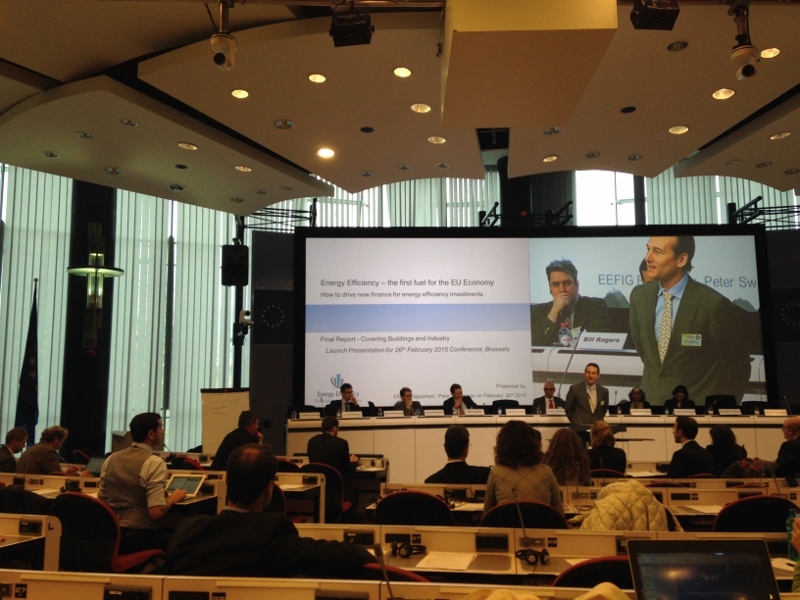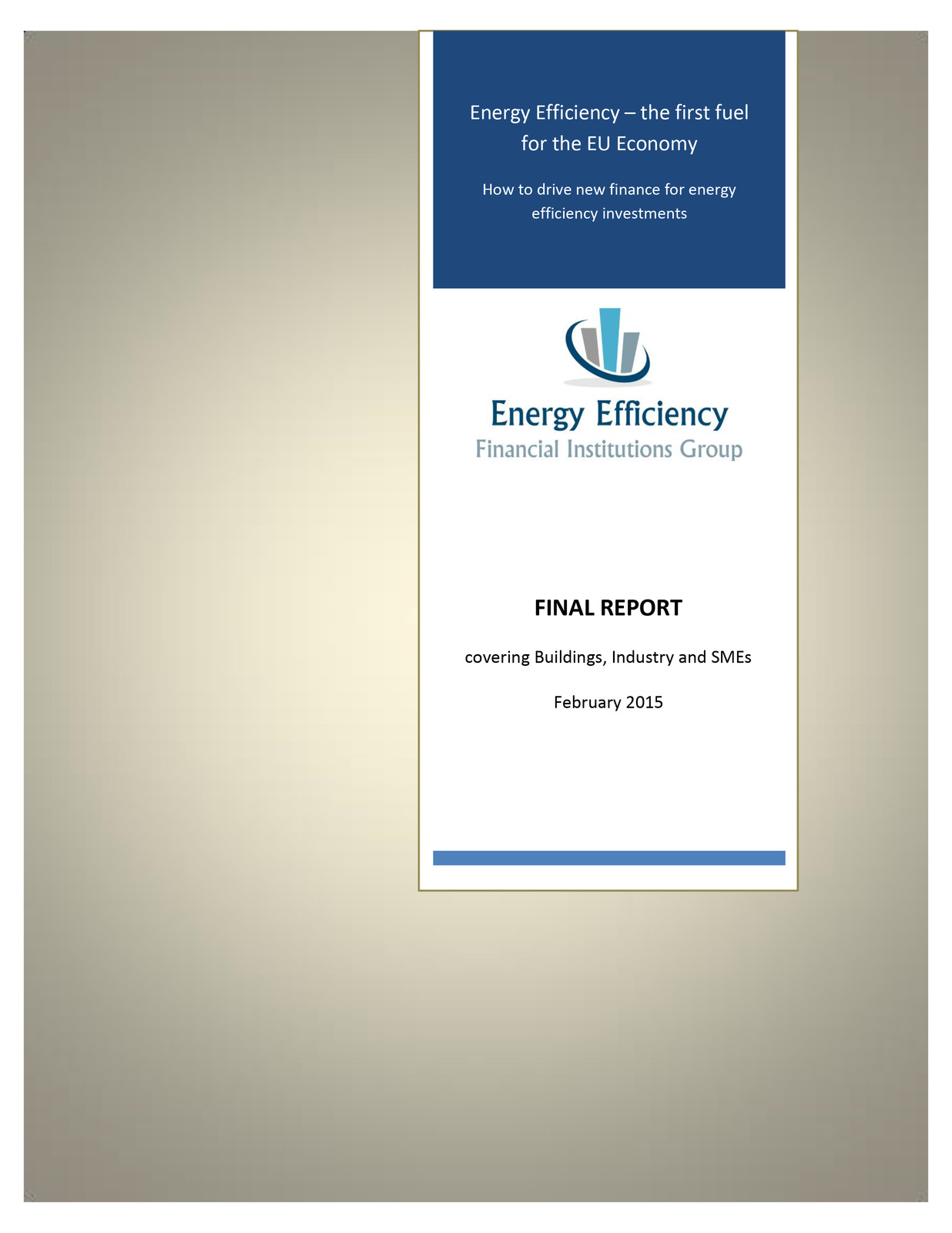-
 focusing on the green investment prospect
focusing on the green investment prospect -
 to reveal the hidden value
to reveal the hidden value -
 in real estate and urban infrastructure
in real estate and urban infrastructure -
 through efficient and sustainable use of resources
through efficient and sustainable use of resources -
asd
The Energy Efficiency Financial Institutions Group (EEFIG) launched its final report “Energy Efficiency – the first fuel for the EU Economy: How to drive new finance for energy efficiency investments” on 26 February in Brussels during the "Heating and Cooling in the European Energy Transition" conference at the European Commission Charlemagne Building.
 The Energy Efficiency Financial Institutions Group (EEFIG) was established as a specialist expert working group by the European Commission and United Nations Environment Programme Finance Initiative (UNEP FI), in late 2013, as a result of the dialogue between Directorate-General for Energy (DG Energy) and UNEP FI to determine how to overcome the challenges inherent to obtaining long-term financing for energy efficiency. EEFIG resulted from the joining of these forces to engage with the sector’s stakeholders and financial institutions to create an open dialogue and work platform helping to convene meetings and bring in a variety of active and interested players.
The Energy Efficiency Financial Institutions Group (EEFIG) was established as a specialist expert working group by the European Commission and United Nations Environment Programme Finance Initiative (UNEP FI), in late 2013, as a result of the dialogue between Directorate-General for Energy (DG Energy) and UNEP FI to determine how to overcome the challenges inherent to obtaining long-term financing for energy efficiency. EEFIG resulted from the joining of these forces to engage with the sector’s stakeholders and financial institutions to create an open dialogue and work platform helping to convene meetings and bring in a variety of active and interested players.
The international landmark study is the work result of more than 120 active participants representing finance, policy makers, the buildings sector, industry, SMEs and energy efficiency market participants. Green Value Associates (GVA) was one of the active participants in developing the report. Ioannis Orfanos, GVA Director, actively participated in two of the workshops held in London and Brussels that discussed issues with Institutional Investors in Commercial Buildings and with SMEs in Industry respectively.
 The EEFIG report focused on ways to drive more finance for Energy Efficiency Investments. The report identified success factors, new policies and financing solutions to increase energy efficiency investments in Europe in the buildings, industry and SME sectors.
The EEFIG report focused on ways to drive more finance for Energy Efficiency Investments. The report identified success factors, new policies and financing solutions to increase energy efficiency investments in Europe in the buildings, industry and SME sectors.
EEFIG’s report states that energy efficiency investment is the most cost effective manner to reduce the EU’s reliance, and expenditure, on energy imports costing over €400 billion a year. EEFIG participants believe that the European Fund for Strategic Investments (EFSI) should put energy efficiency first and that it is essential in the context of the Energy Union to reframe the role that energy efficiency plays in how Europe plans for, finances, and constructs its energy system.
In this context, energy efficiency is the first fuel because it is competitive, cost effective to produce; it is widely available and delivers multiple benefits to project hosts and national economies. For these reasons, EEFIG considers that the Investment Plan should include a clear focus on improving the energy productivity of Europe as a key driver of growth. In doing this, Europe can unlock the multiple benefits of energy efficiency investments including energy security, competitiveness, social and territorial cohesion, job creation, well-being and greenhouse gas emissions reductions.
Presently, there are insufficient public and private investments in energy efficiency in buildings, industry and in SMEs. If this trend continues then EU Member States are at risk of missing their 2020, and longer-term, energy efficiency targets and their economies will be deprived from the boost energy efficiency investment can provide. EEFIG estimates that a five-fold increase in private energy efficiency investments in European buildings is required by 2030. The scale-up of smart financial instruments is required and that they must be tailored, by sub-sector, to encourage a long-term and cost effective reduction of energy use in Europe’s buildings, industry and SMEs.
In its report, EEFIG identifies the need to engage multiple stakeholder groups, scale-up the use of several financial instruments within a clear and enforced “carrot and stick” legislative framework and identifies 19 recommended market and policy actions in four strategic areas: 1. Market, 2. Economic, 3. Financial and 4. Institutional
Furthermore, the EEFIG report identifies 15 financial instruments for energy efficiency investing and assesses their use and potential in the various buildings and industry sub-sectors together with relevant case studies that illustrate best practice applications of each instrument within EU Member States as well as highlighting certain key benefits and challenges which each of the instruments face.
You can access the report document, presentation slides and executive summary here.





